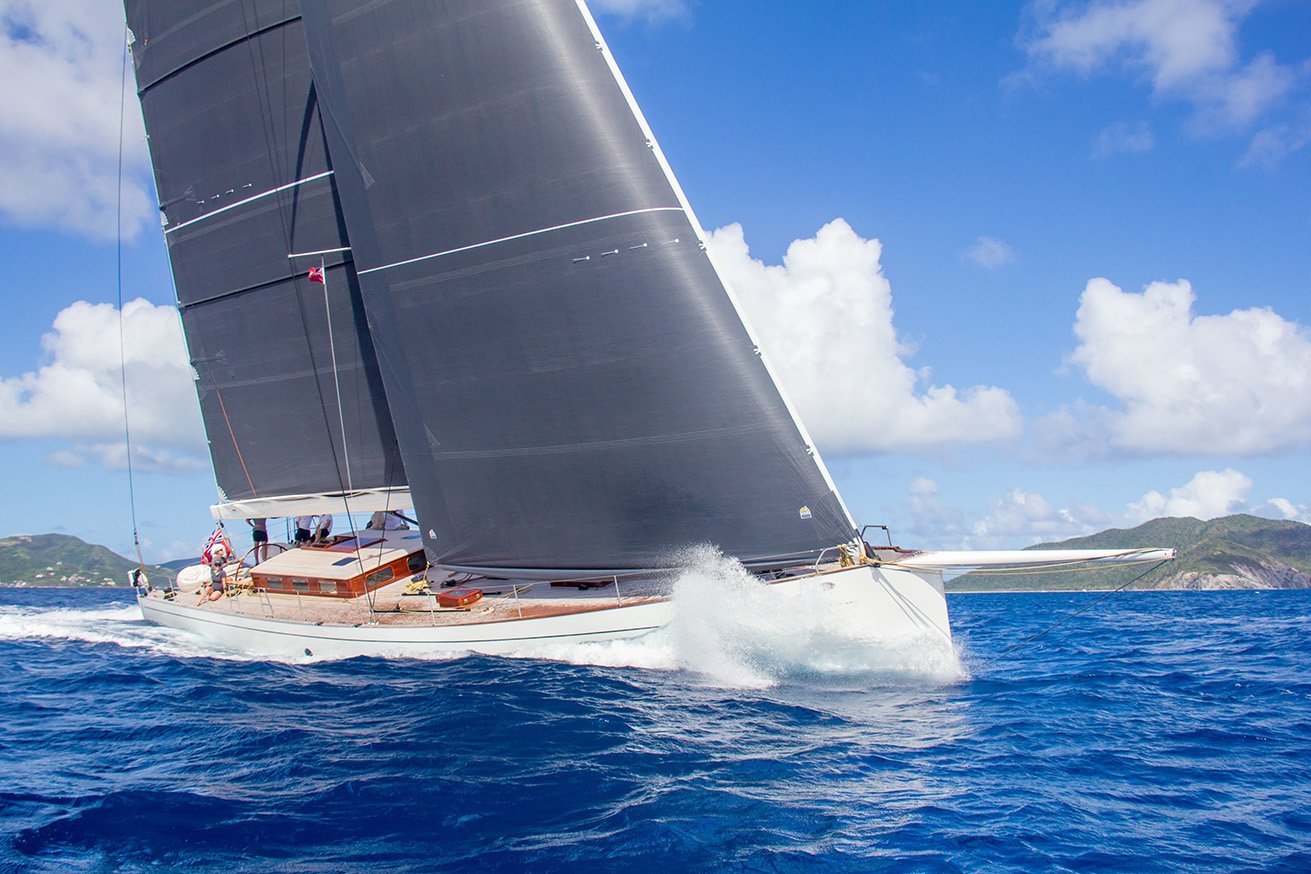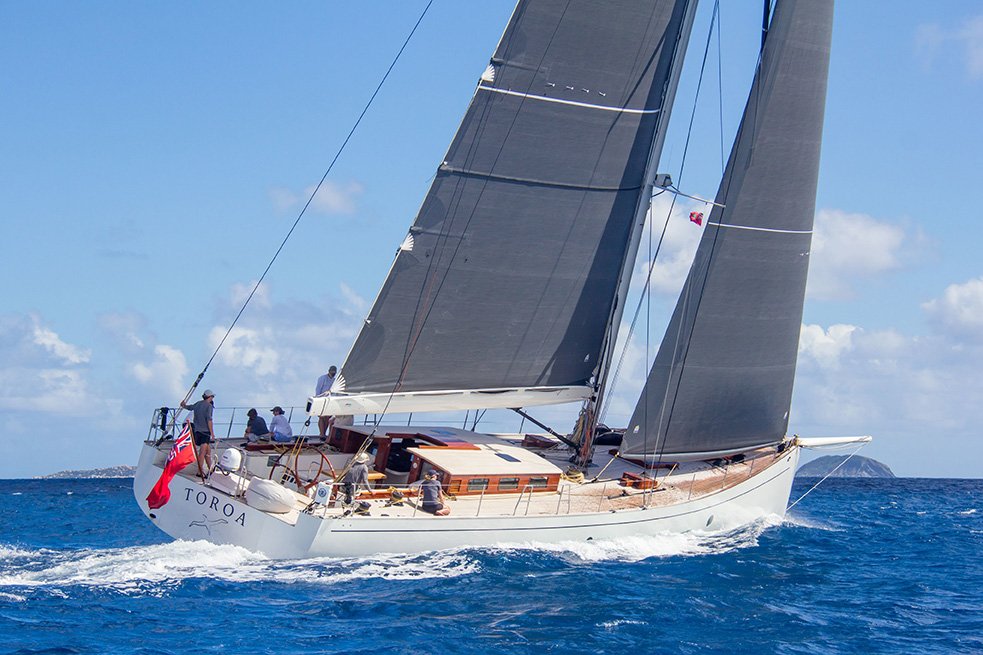Toroa 2017
Toroa
As interesting as any other fact about her is that she was built in Maine, mostly out of carbon fiber, epoxy, and rigid foam, by Brooklin Boat Yard, a company that built its reputation on classic wooden boats.
Designed by Spain’s Botin Partners and launched last summer, Toroa will be based in Europe, but her owners plan to cruise in New England, the Caribbean, and the Pacific. The extremely high-tech vessel is designed to go fast, but also features comfortable accommodations and cruising amenities.
According to Brooklin Boat Yard owner Steve White, just three boatbuilding companies in the world were selected to bid on construction: one in Europe, one in New Zealand, and his yard in Brooklin, Maine. The choice to build in Maine made perfect sense early in the process, when the yacht was scheduled to be built out of wood veneers inside and out, over a foam core. Brooklin Boat Yard had just completed Frank Gehry’s varnished architectural tour-de-force Foggy, using identical methodology. When Toroa’s designers arrived to evaluate the yard, they took Foggy as evidence that here in Maine was a company that could accomplish the near impossible. But after a contract was signed, the decision was made to switch from using mostly wood in the hull construction, in favor of more carbon and the strongest kind of epoxy resin, which has to be “post-cured” by heat in order to reach full strength.
This was the first complete hull that Brooklin Boat Yard built using above-room-temperature, thermo-setting resin. A few other yards in Maine have built small boats in tight buildings that can be overheated; two have specially constructed oven rooms specifically for post-curing.
Brooklin Boat Yard had neither, but... no problem. White and his talented chums invented a large insulated blanket heated with hot water running through a matrix of tubes. The blanket could be draped over the hull, and concentrated heat exactly where it was needed, while the work crew monitored the process with—pardon the pun—no sweat. White admitted his gizmo might be patentable, but evidently he prefers to earn his daily bread by building boats.
The goal of all this engineering for speed is light weight, great stability, and extreme strength. This hull doesn’t use a canting keel, which moves a ballast bulb up to windward. It gets extra stability by virtue of a 15-foot 15,000 pound lifting T-bulb keel and twin rudders. (When the boat comes back on-soundings, the keel can be raised using hydraulics to a mere nine feet.) There is also water ballast. A total of 1,100 liters of water, most of it scooped up out of the ocean, some of it in the fresh water tanks, can be pumped sideways to tanks in the windward bilges. In the world of fast sailing, providing that nothing structural fails, stability equals speed.
Building Toroa involved many subcontractors. The carbon rudder was built by North Shore Composites of Bristol, Rhode Island; the deck, from Teakdecking Systems in Sarasota, Florida, was installed by Larry Murray of Teakdecking Services in Union, Maine. Addaero Aerospace Manufacturing in New Britain, Connecticut, fabricated the titanium deck fittings, and the carbon bowsprit and anchor arm were built by Steve Hassett at Bath, Maine-based Custom Composite Technologies. The spars were imported from Southern Spars of New Zealand. The boat’s luxurious interior was by Wallace Interiors of Trenton, Maine. La Bastille of Savanna, Georgia, cast the custom pewter countertops in the galley.






















